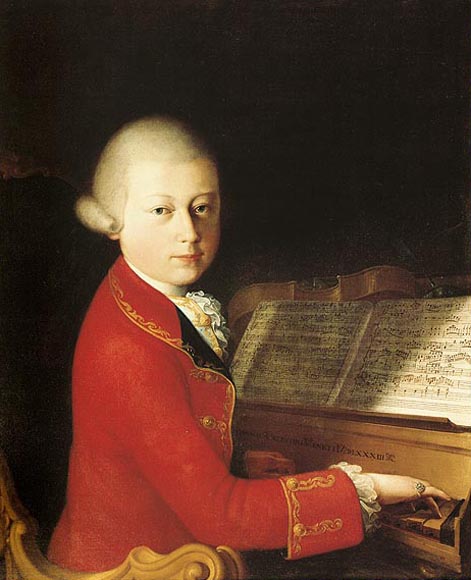In the time of Mozart, most musicians were employed by the church or by royalty. Either way, musicians of the time were in the same class as servants, maids and butlers. Mozart's contemporary Haydn was employed by the royal Esterházy family at the court in Hungary on either a full time or part time basis from 1761 to 1802.
Mozart also worked for a royal employer, Prince-Archbishop Hieronymus Colloredo in Salzburg, Mozart's birthplace. Mozart spent his early childhood touring Europe as a child prodigy and spent some time in Italy studying music. When he returned to Salzburg he was hired as a court musician when he was seventeen years old. Because of Mozart's strained relations with the Archbishop over salary and other matters, he resigned his position at court when he was twenty and planned to tour Europe once again in search of employment. Mozart ended up in Paris with his mother while Leopold stayed in Salzburg to try and find a better position for his son.
Mozart's trip to Paris produced no opportunities for employment. He performed little and composed little. He was reduced to pawning some of his personal effects for money to get by on. To add to his miseries his mother became ill and after three weeks died in Paris in 1778. The Piano Sonata No. 8 was most likely a product of his sorrow over the loss of his mother.
Mozart wrote few major pieces that were in minor keys, only one other piano sonata besides this one is in a minor key. It is in three movements:
The theme progresses at a restless pace until the second theme appears in the key of C, the relative major of the home key of A minor. While this theme is in a major key, the restlessness of the opening continues. After the obligatory repeat, the development section begins with the first theme being heard in C major. The music modulates and shifts to a minor key as the first theme is developed briefly. The recapitulation begins and after the restatement of the first theme along with transitional material, the second theme reappears, this time in the minor. There is a short coda that emphasizes the dotted rhythm of the opening that is punctuated by the bass moving in 16th notes until the final A minor chords.
II. Andante cantabile con espressione - This movement is in F major and begins with simple elegance that stands in sharp contrast to the darkness of the first movement. But roughly half way through the movement the music returns to the restlessness of the first movement. The music returns to simple elegance as it sings its way to the end.
III. Presto - The finale is written in rondo form. A striking theme opens the movement that reflects the turmoil of the first movement, but by different means. The music is relentless in its pursuit of expression. There is a brighter section, but the music returns to the opening theme. The theme bounces into the bass momentarily, and after a few more comments the music ends as it began, in the key of A minor.



No comments:
Post a Comment